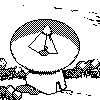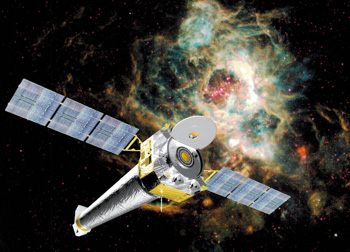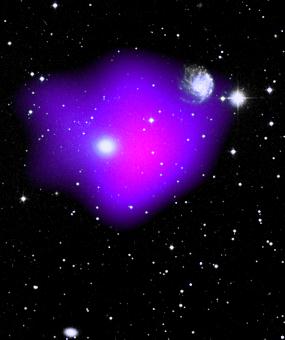Shedding a New Light on the Universe
A Telescope for All Occasions
Optical telescopes are built to detect visible light waves and then to reflect the light using mirrors, or refract it with lenses, focusing it into an image. Most optical telescopes are ground based, but recently, we have started putting them in orbit. The best example of this is the Hubble Space Telescope (HST). Because it is in orbit, it has a view of the heavens that is unimpeded by atmospheric haze and distortions. This, in combination with precision optics, allows it to see further into the Universe than a ground-based telescope ever could. |

|
|
Because radio light is low energy, it tends to behave more like a wave, so most radio telescopes are dishes made of conducting metal that reflects radio waves to a focus just as an optical mirror reflects visible light.
|

|

|
Because the wavelengths of radio light are so large (on the order of centimeters), a radio telescope must be physically much larger than an optical telescope in order to obtain the same resolution. The Parkes radio telescope, with a 64 meter diameter dish, has poorer resolution than a small backyard optical telescope. To the left is a picture of the 140 foot telescope located at the National Radio Astronomy Observatory (NRAO) in Green Bank, WV.
|
Some infrared (IR) measurements can be made from the ground, but the majority of them are made from satellites to cut down on atmospheric absorption of the IR wavelengths. To the right is an image of the Spitzer Space Telescope. It was launched in 2003.
|

|

| X-rays and gamma-rays can only be collected from space because our atmosphere absorbs them. To the left is an image of the Chandra X-ray Observatory; it was launched in 1999.
|
|
When we compare measurements of the same region of the sky taken in different energy ranges, it becomes obvious how important multiwavelength observations are. To the right is a superposition of optical and X-ray images of a cluster of galaxies. The three big white spots are from the optical image of the galaxies taken by HST. In the background, we can see a large cloud of gas that was only visible to an X-ray satellite, in this case, ROSAT (shown to the right).
|

|

Previous |

Next |


